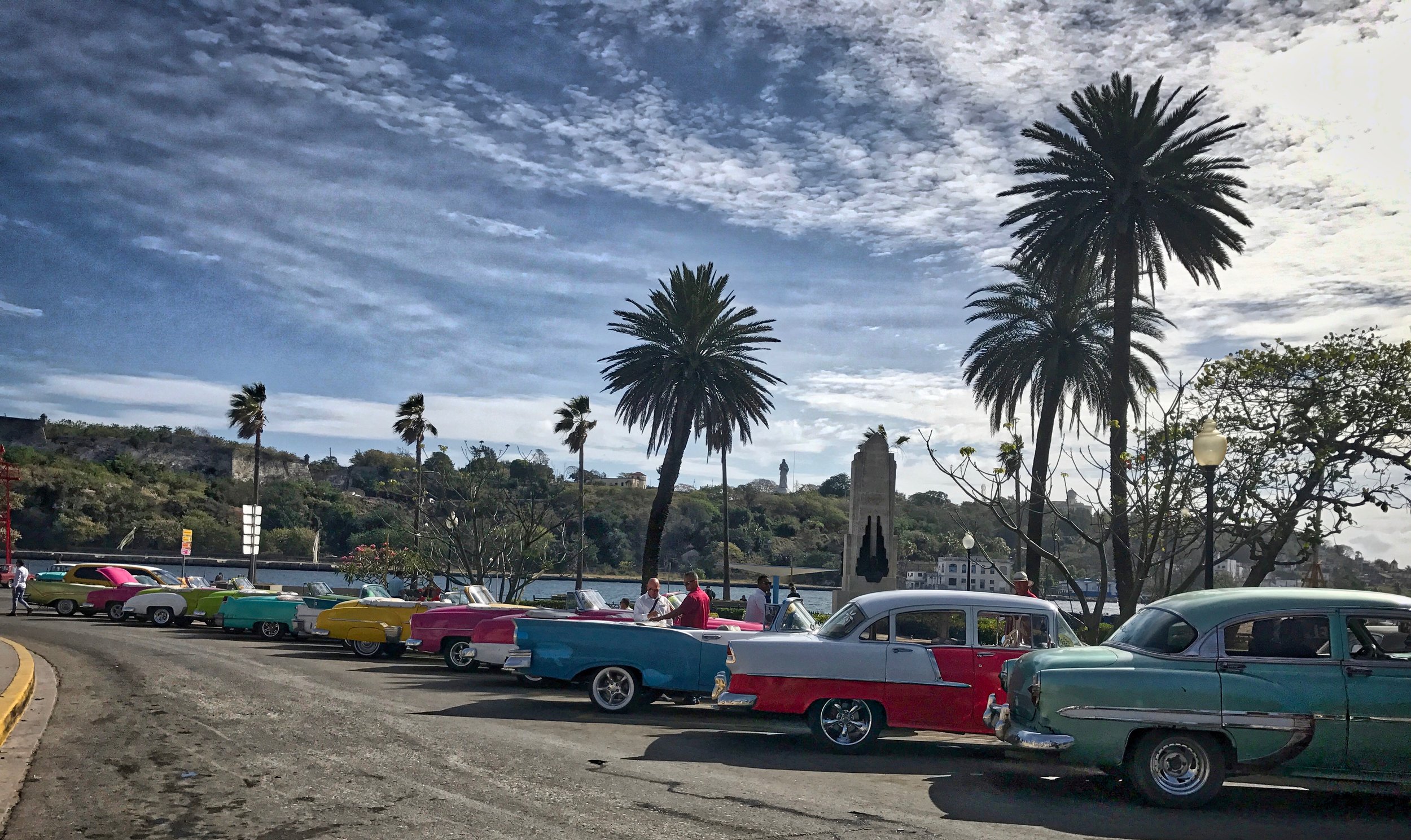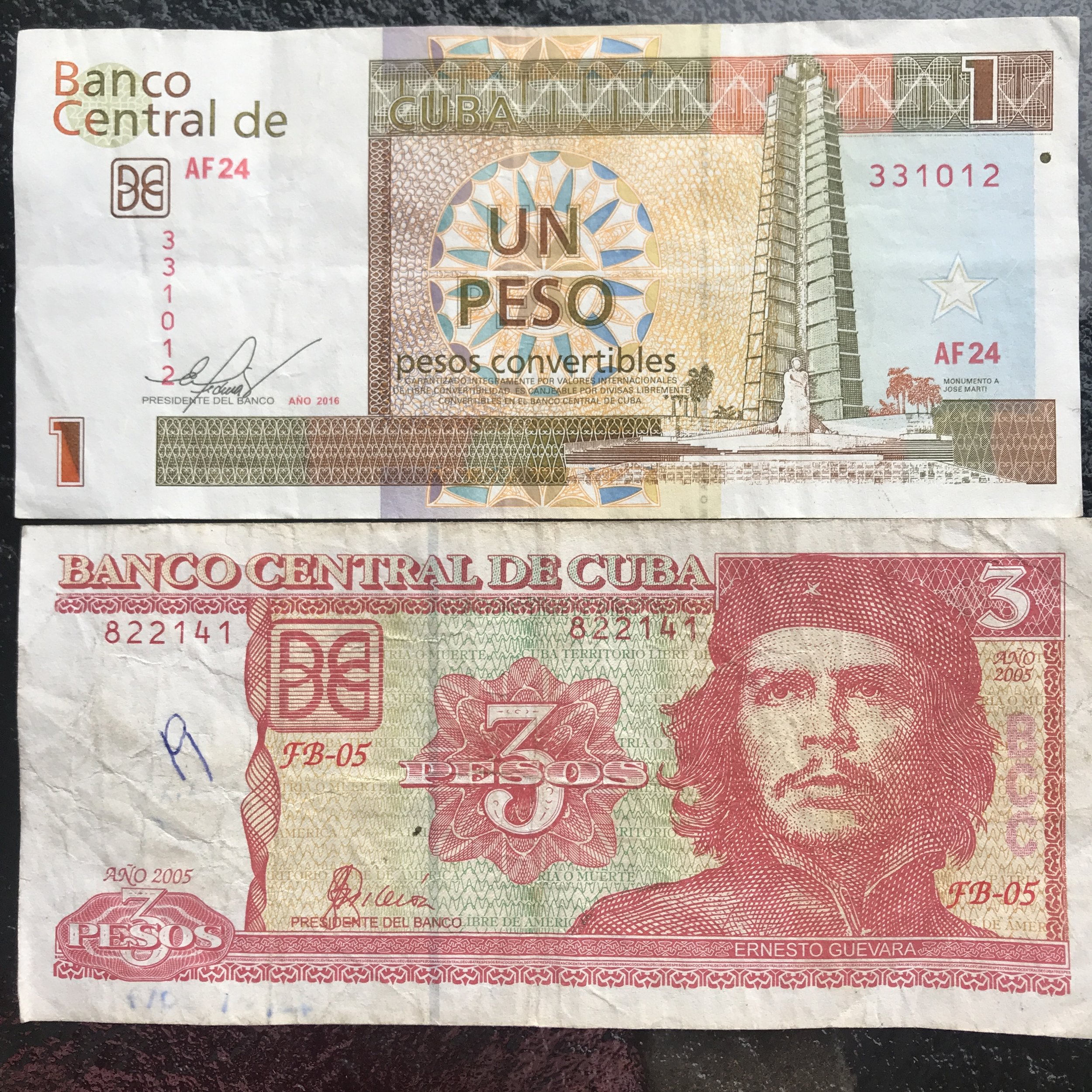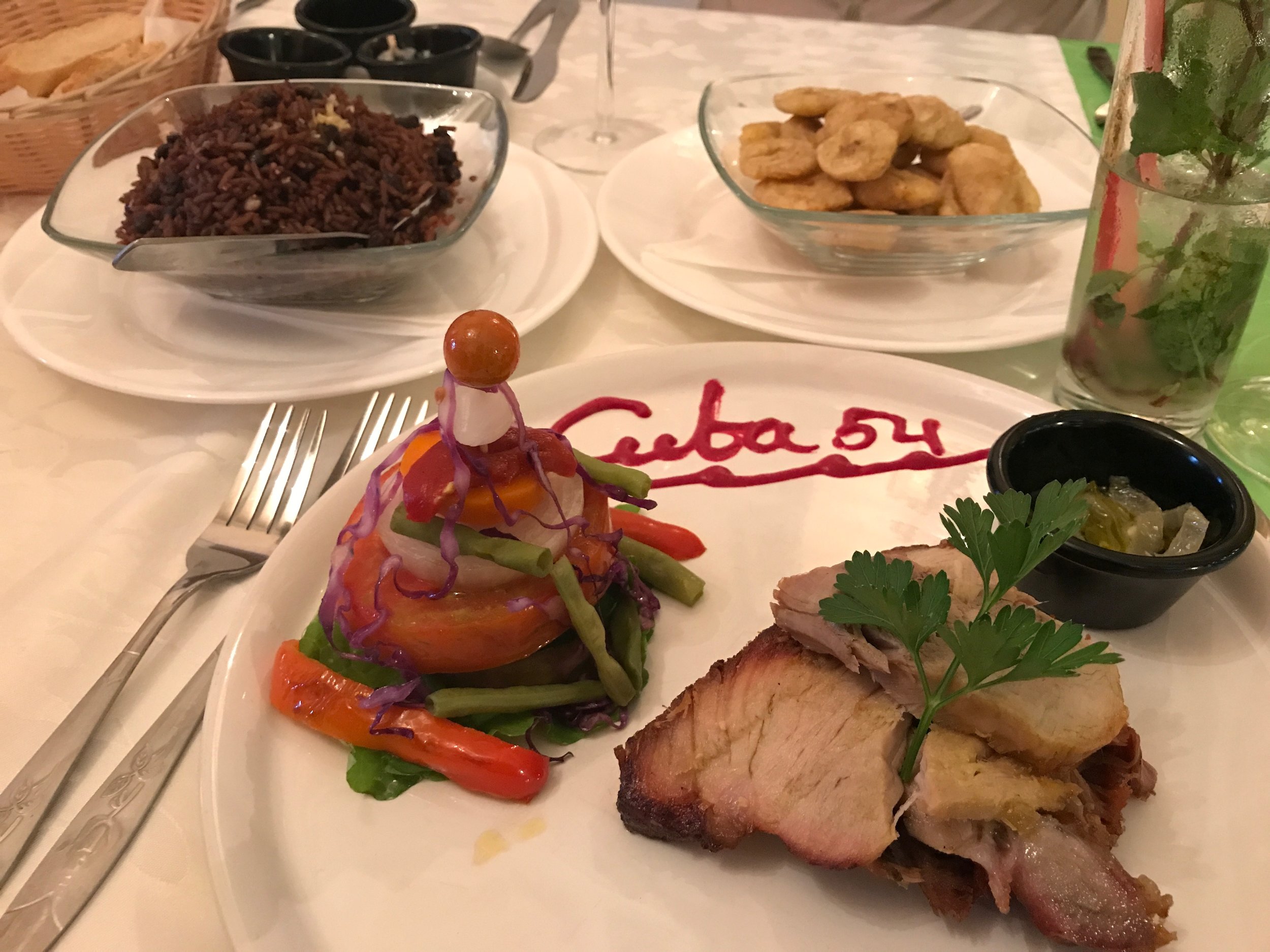So you found a way to get to Cuba to do some birding! Awesome! Here are some things I learned that you might find helpful. In April I had the opportunity to visit Cuba and this article is about my general impressions. I'll get into more detail for specific areas in future posts. My trip was through Holbrook Travel and it was one of the best trips I ever took.
We're kind of in a golden age of birding travel as far as locations, amenities and type of birding tour you can take. I don't mind the occasional "death march" for a particular bird, but I do not like ten days of death marches. I like to return home from an adventure relaxed, refreshed with a drive full of photos and notebook full of story ideas. I no longer enjoy returning home feeling like I need a vacation from my vacation. When I told Holbrook that I wanted to see lovely Cuba birds, experience the culture and history and maybe spend some time on the beach for a nap--they were the first tour company to give me exactly what I asked for, it was amazing.
But here are some things to note about Cuba:
Money is...complex...
You'll be dealing with multiple currencies.
You will not be able to use a credit card or debit card with a bank based in the United States. So, US citizens need to go with all the cash they anticipate needing the entire trip--and you will be tipping a lot. Tourists will use the Cuban Convertible Peso aka CUC (the note on the top in the above photo) and locals will use the Cuban Peso ( the note on the bottom in the above photo). CUCs are worth a lot more than Cuban Pesos. Stores will often have two prices for an item to reflect this. When paying cash in a store and receiving change, keep in mind that some might try to give you the change in Cuban Pesos--therefore taking way more of your money than intended.
When I went to my bank to get cash to take to Cuba, they were full of useful information. When you exchange money in Cuba, you are charged 3% fee. However, if you exchange US currency you will be charged an additional 10% penalty. So if you go down with $1000 US dollars, you will lose $130 at least in the exchange. My bank was well versed and noted at the time that they advised clients to exchange US currency for Canadian money or Euros and then to exchange that in Cuba to avoid the 10% penalty.. When I went in April 2017 the exchange rate with Euros was almost even with the US dollar and I had some Euros leftover some trips to Europe this year. When I exchanged my Euros in Havana, I was charged the 3% fee. When I exchanged my Euros in smaller towns like Playa Larga, I was given an even exchange of Euros to Cuban Convertible Pesos. I've had some people tell me that they were still charged the 13% percent when they exchanged Euros because they had a US passport (which you have to show when you exchange money). I can only report my personal experience and that did not happen to me.
Internet Will Be difficult.
One of the Internet cards you can purchase that grant you 60 minutes of Internet usage in Cuba.
I think by now you can get cellular service in Cuba via Verizon and Sprint, but it's not great. Generally, I use wifi when travel and if I need to make a call use Skype or WhatsApp. When I was Cuba, the country had only had the Internet for five years. There is no such thing as private wifi. You cannot tuck yourself into your room at the end of the day to upload photos to social media and text with friends. The only way to use the Internet is to get a 60 minute access card that will let you log in at places like hotel lobbies and restaurants. You find the connection and use the id numbers to log in. You must be vigilant about logging in or logging out. I found that even just putting my phone in airplane mode didn't necessarily log me out and I'd lose unused minutes. Even with the cards the wifi is slow unless you're at one of the huge all inclusive resorts.
The cards can be purchased at hotels, convenience stores or from random guys on the street in Havana. They run anywhere from 1 - 3 CUCs. If you go to a store or hotel, they are only allowed to sell you 3 cards at a time so you can't go in and buy a bunch for your group or for yourself.
You'll Need More Than One Guide.
The three guides I took to Cuba. I also used my Sibley app on my phone.
There's no one perfect bird book for Cuba. My favorite of the three is Endemic Birds of Cuba by Nils Navarro--we even got to meet him as part of our trip. It's useful discussing habitat as well as having fantastic illustrations and good photos. He even has a checklist of the endemics on the cover and he encourages you to put you name on it because your trip helps contribute to the understanding and knowledge of the birds of Cuba. However, this book is mostly for the birds you can only see in Cuba. It doesn't cover all of the birds you can see in Cuba. The Field Guide to the Birds of Cuba covers all of them but is problematic both with its illustrations and also by not numbering the pages of the illustrated plates--grrrrr. I hear that it's being redone, but I don't know when that's happening. Birds of the West Indies has ok illustrations but you do need to pay attention to the maps to make sure your bird is one that is expected in Cuba.
Toilet Seats Are Not A Thing, But Tipping Is.
Typical Cuban restroom.
I'm always fascinated by the different restroom differences you find when you travel--like sometimes it's just a hole in the floor. Cuba has toilets, but frequently the public ones did not have toilet seats. Most public restrooms have someone on hand to give you some toilet paper before you enter. Essentially, if you need to go, you need to tip a few coins. If it's an emergency and you're out of cash they won't prevent you from going in.
You Can't Visit National Parks On Your Own
Those classic cars are everywhere. This one drove past as we were taking a group photo. Our overall guide Hiram Gonzales is second from the left.
In the US you can purchase your park pass and go birding on your own. In Cuba, you have to get a state guide to take you in to the parks. It was interesting watching our main guide Hiram navigating this. Our groups was in an outdoor bar and someone overheard we were birders going in to Zapata Swamp. They were also birders and going on their own and hoped our guide would give them tips. All Hiram would give them were the names and numbers of other guides available to take them in. The other birders got frustrated and Hiram told me later that the guides are a must.
Another thing to keep in mind when birding in Cuba is that the two semesters of high school Spanish that you took ten or twenty years ago is not going to cut it. Bone up on your Spanish skills before you go or hire a local cultural guide (which is what we did) to help with translations. Hiram spoke English but some of the park guides we were required to use did not speak it at all.
Also, since the guides are living for your tips, some of them haven't learned the most ethical birding behaviors. They've learned that if they get people the bird, they get a better tip. I'll write more about that in future posts.
The Food Is Not Spicy.
A dish of roast pork and vegetables in Havana
I was warned the food will be quite bland in Cuba. I found it to be quite flavorful. I think what people were trying to warn me about is that even though this is a Latin country, the food isn't super spicy like what you'd find in Guatemala or Mexico. Rice and beans come with everything and roast pork was the most common meat, but seafood was available and was quite fresh and delicious. If you have any kind of allergy or sensitivity to foods, you do need to be vigilant and repeat it again and again. I have a pineapple sensitivity (fortunately not life threatening) and there were a few times that even though I'd mentioned I couldn't eat it, it would find its way into a beverage or sauce.
Guess what is on my bread? Answer below.
Condiments are always fun for me to discover in different countries. I'm always fascinated by what is offered and especially what different communities like to spread on their bread. Of course no one can top my true love of Austria where putting "lard spread" on your bread is a thing, but many places still have fun and unique offerings. In Cuba, we were offered bread with a dish full of a very light colored spread. I thought it was some kind of butter. It was not. So imagine taking a bite of your bread and expecting butter only to get mayonnaise instead. It wasn't my thing. I need some meat or cheese to mingle with the mayo. Others in my group were delighted by it.
You Will See Illegally Caged Birds Everywhere.
Indigo bunting for sale outside of our hotel.
I'm going to write more about this later, but you will see a lot of illegal birds in cages. I started keeping a tally of all the indigo and painted buntings I saw in cages. I saw a bunting in a cage every single day I was in Cuba. There's a lot more going on here than people who simply want to profit from wildlife and it truly deserves it's own article. If this is something that angers you, be prepared for it.
The Most Common Bird I Saw...
Red-legged thrush.
I just realized that the only bird picture in this post was a bunting in a cage and I needed to add one of the many cool wild birds we saw. Red-legged thrushes are common and all over the friggen place.
What Can You Bring As Gifts?
When we asked about things we could bring to Cuba as gifts we were told anything sports related--especially jerseys or ball caps, nylons, thumb drives, coloring books and crayons.
The coloring books and crayons were met with a cool response. The thumb drives and sport caps were VERY welcome. The nylons...well, I wouldn't take garden variety panty hose. What Cuban women want are the sorts of things you'd purchase from Leg Avenue. I didn't want to be the creeper taking secret photos of women so I don't have photos to back this up, but what struck me was that the women in Cuba tend to flaunt what they have. The airport security were all gorgeous women in their twenties wearing fishnets and heels as well as form fitting shirts and skirts...kind of like something you'd find searching for "female security guard costume" on Amazon. At one of the banks where I exchanged money, the female manager came out who looked to be in her fifties and she also had the fishnets, short skirt, blouse as well as a corset over it. I was asked by Holbrook if our female cultural guide had been dressed appropriately because some tours had complained the women were dressed immodestly. I was a little irritated by this. Here's the thing--everyone dresses that way in Cuba and people from the US are coming to visit. I don't think the women of Cuba should dress for my comfort, they should dress for their own and we should deal with it.
When I was in Cayo Coco, I had hotel staff ask me outright for things I might be leaving behind. I was returning my beach towels and the towel girl asked me for any toiletries, dresses, skirts or shoes I might have, "Please, pretty lady, do not leave them in the room for the maids. If you, kind lady, could bring them to me here before 6pm, I will give them to my family." I felt like my Keens water shoes, convertible pants and spf 50 sunscreen would be a big disappointment to her.
When it was raining, no one had rain coats. Our cultural guide said that rain coats don't make it to Cuba...I may have left mine behind.
A couple of the guys in our group wandered a small town after a day of birding and met the local librarian who was happy to show the books he had collected from people around the world. And based on that, I would suggest finding Spanish translations of your favorite book and bring those down.
Another welcome item would be ibuprofen. Sure, there's socialized medicine in Cuba but we learned from many women that you need a prescription for it and pharmacies frequently run out. Ladies, many of us know how important that sort of thing is throughout the year. If you can spare your travel bottle at the end of the trip, it's appreciated.
If you can find a way to get to Cuba--do it. I would advise not cutting corners or trying to sneak in around the current US restrictions. It's a beautiful country and the people are very warm. I felt fairly safe walking the streets of Havana on my own. And if you're looking for a good company to travel with, I highly recommend Holbrook.










